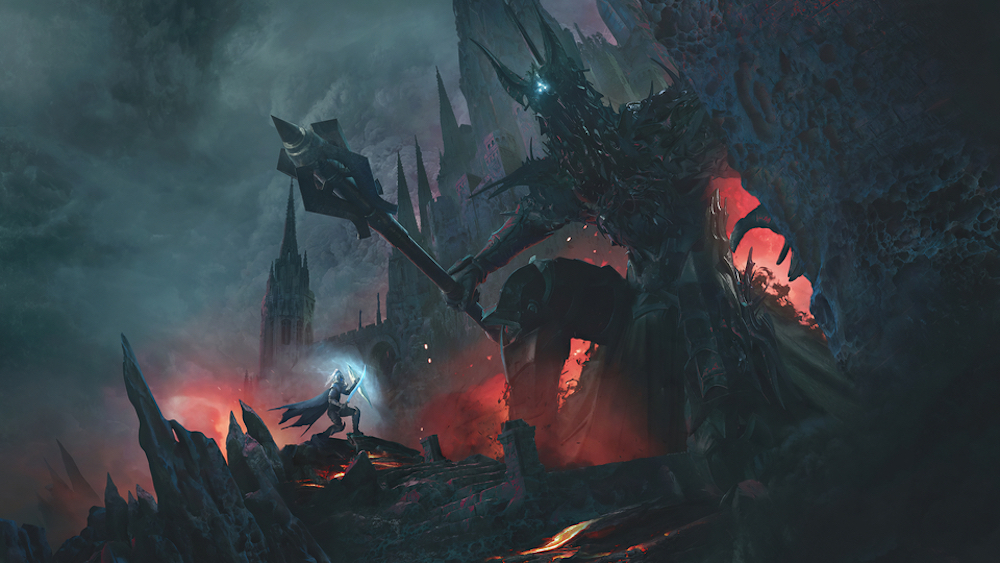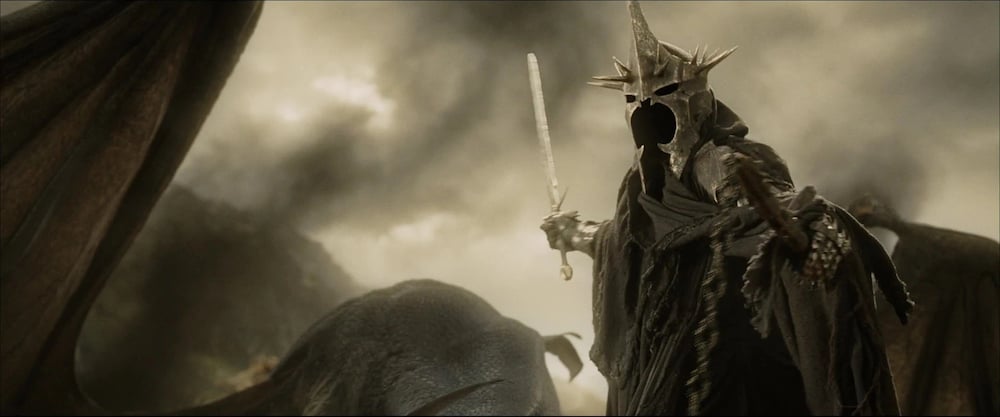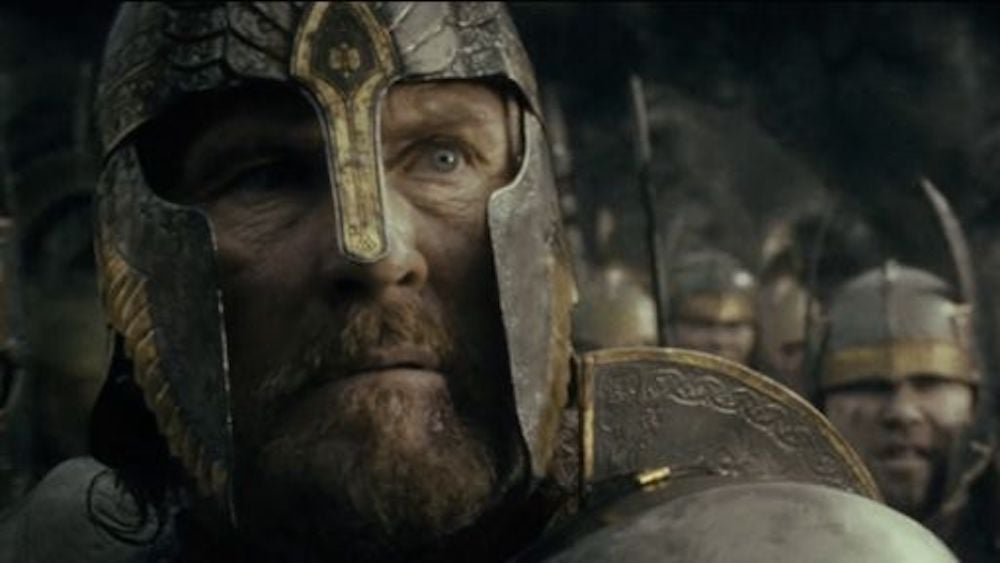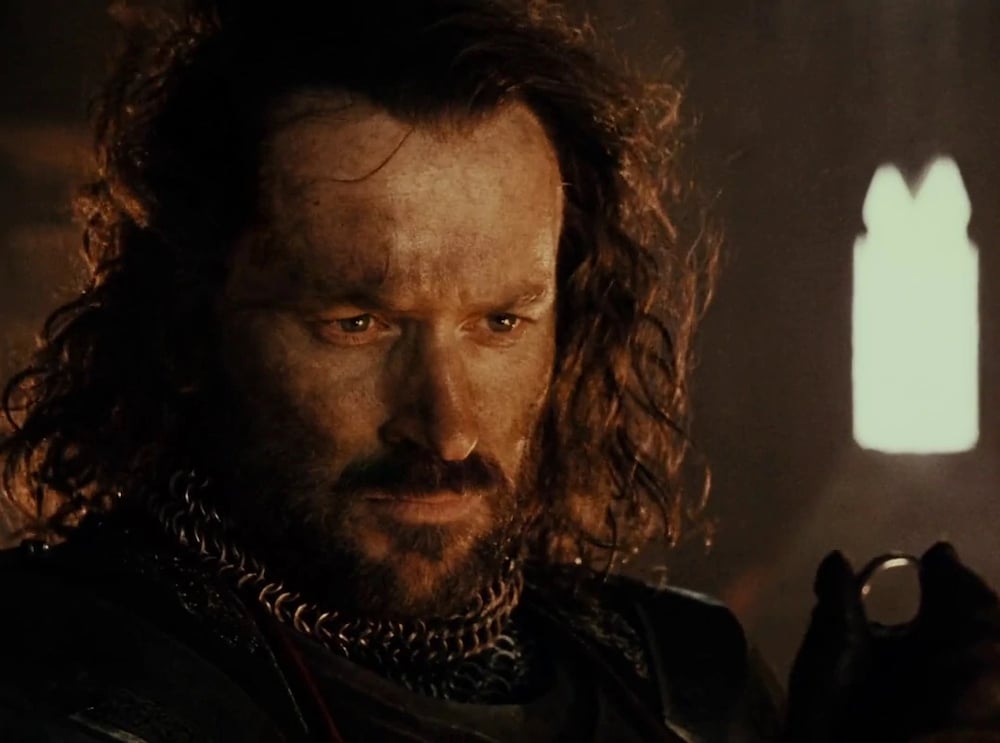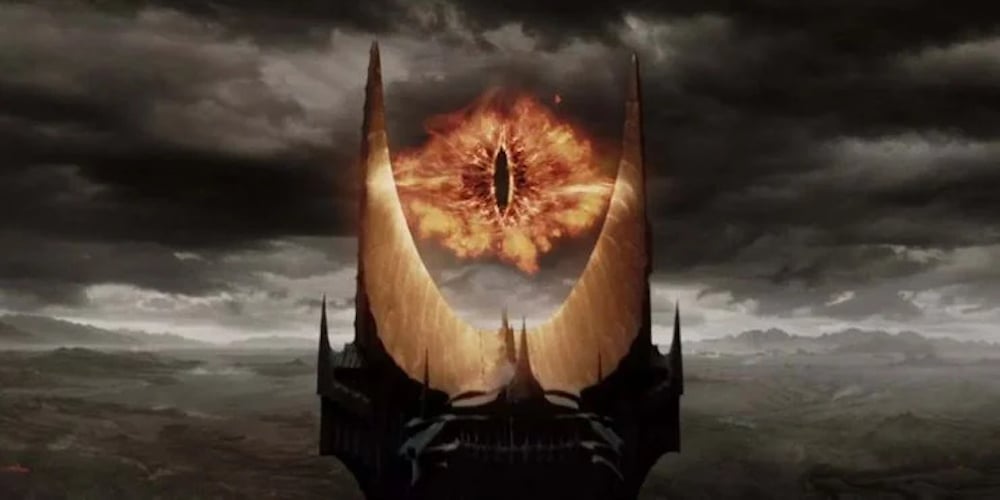LotR: The Sauron Breakdown – But They Were All of Them Deceived
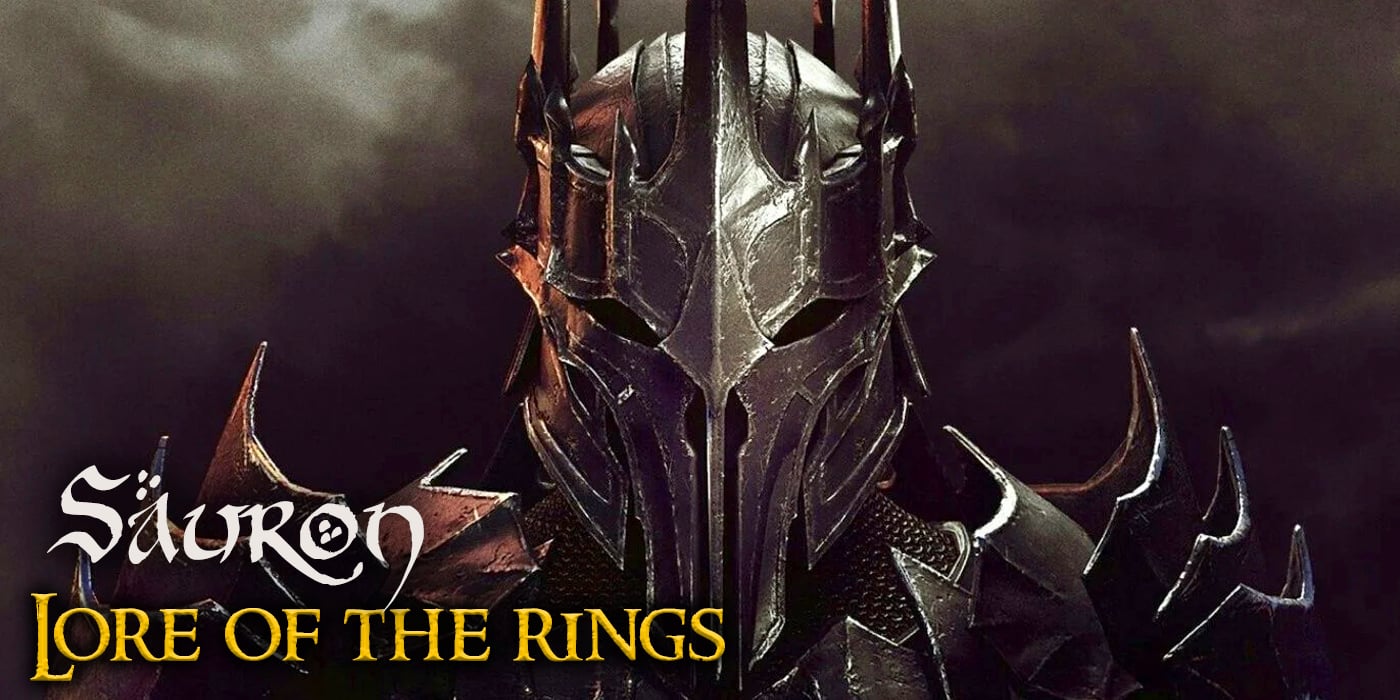

With fire in his eye, this corporeal can-opener had the bling to keep all of Middle Earth in line. Who is Sauron, the Lord of the Rings?
He’s the biggest bad of J.R.R. Tolkien’s infamous Lord of the Rings trilogy, but Sauron the Deceiver has gone by many names. His original name was Mairon, and he impersonated an Elf and went by Annatar, “The Lord of Gifts”. The Sindar Elves called him Gorthaur, meaning “dread abomination”. But his most infamous name was Sauron, the “abhorred”.
Mairon & Morgoth
Sauron was one of the most powerful Maiar, the spirits that helped the immortal Valar shape the world under the guidance of the Eru the One. His name was originally Mairon, and he was a patron of the smithing Valar Aulë.
This was back when Sauron was a good boi. Too good, in fact. His desire for order and perfection made him vulnerable to the power of Morgoth the fallen Valar, and through him, Mairon sought to control the beings of Middle Earth. For their own best interests, of course.
But Mairon worked as a double agent, staying cozy with the Valar while they gave him information which he then fed to Morgoth. Once his master established his hold on Middle Earth, Mairon officially and publicly changed teams.
In the First Age, Morgoth stole the Silmirils, a set of magic gems forged from the light of the Two Trees that were used to fashion the sun and the moon. It was during this age that Sauron really built his rep as Morgoth’s most terrifying lieutenant, a shapeshifter, and a deceiver. Fun fact, Sauron’s battle victories made him the lord of both werewolves and vampires, which are a thing in Tolkien’s universe.
When Morgoth was defeated, Sauron fled to Middle Earth. And for five centuries, The Abhorred stayed hidden.
Sauron and the Forging the Rings of Power
During the Second Age, Sauron established a kingdom in Mordor in eastern Middle Earth. He built the dark fortress of Barad-dûr against the landscape of Mount Doom. Evil began to stir in Middle Earth again, and armies of Orcs flocked to his service.
His battle for the loyalty of Men was easy: power and wealth would easily bring them into the fold. But the Elves would be much more difficult to sway. So he decided to disguise himself as one of them. Taking on the appearance of an Elf, he called himself Annatar and used his smithing skills to get in with powerful Elves. Among them was Celebrimbor, the greatest craftsman of his time. He was, after all, the maker of the notorious Rings of Power.
Wiser Elves wouldn’t place their trust in Annatar. Gil-Galad, the High King of Noldor, was not a big fan. Neither were Galadriel or Elrond. And spoiler alert! They were right. Because as we know, in secret, Sauron made his own ring to be master of them all.
One ring to rule them all, One ring to find them,
One ring to bring them all, and in the darkness bind them.
But of course, it’s hard to trick an Elf in the long term. As soon as Sauron put on his ring, the jig was up. The other ring-wielding Elves could sense his malicious intent. Under Galadriel’s advisement, they took off their rings and hid them away. The leaders of Men weren’t so smart. As the nine Men succumbed to Sauron’s will, they became the Nazgûl, or Ringwraiths, and Sauron’s horrifying servants.
The Rise & Fall of Númenor
Thanks to the cleverness of the Elves, Middle Earth still stood a chance, even though Sauron basically controlled the realms of Men. During the War of Elves and Sauron, the armies of the Elves and the High-Men of Númenor were able to defeat the new Dark Lord.
When the King of Númenor, Ar-Pharazôn, marched into Mordor, Sauron knew he didn’t have the resources to hold out his keep. Instead, he took on another not-so-scary appearance and played to the king’s pride. Ar-Pharazôn demanded that Sauron come back to Númenor as his prisoner. And Sauron the sweet-talker was pleased; after all, this gave him the opportunity to establish himself as the king’s right hand. Using his influence over the Númenorean court, he nurtured their greed. And they soon became covetous of the Elves’ immortality–turning them against the Valar.
But it was Sauron’s own pride that led to the destruction of Númenor. He convinced the city’s people to revolt against the Valar and attempt an invasion of Valinor. As punishment for this, the city that was risen from the sea and was drowned in the sea whence it came.
Sauron vs. the Last Alliance of Elves & Men
During the fall of Númenor, Sauron’s body was destroyed but his spirit lived on (as it has a tendency to do). He took his ring and fled back to Mordor, where he built a new body. But no more would be able to disguise himself as fair to the eye.
Meanwhile, the few surviving Númenoreans escaped the ruined city under the leadership of Elendil, a Lord of the court who maintained the old Elven ways during the time of Sauron’s influence over King Ar-Pharazôn. As you can imagine, Sauron was not his biggest fan. So when he found out that Elendil and the remaining Númenorean refugees established the realms of Gondor and Arnor, he was none too pleased.
Sauron attempted to strike down these new cities of Men. But the Elven king Gil-Galad had grown greatly in power after Sauron’s fall. So when Gil-Galad and Elendil joined forces, their seven-year siege of Barad-dûr put Sauron in a tricky spot. Finally, Sauron himself took to the battlefield to duel the two legendary kings. Tragically, he slew them both.
Enter Isildur
And here’s the part you probably know: Isildur, Elendil’s son, picked up Narsil, his father’s broken sword. With it, he cut off Sauron’s hand, separating the Dark Lord from the One Ring, and turning the battle in his favor. Sauron was defeated, and his body was demolished. His spirit, however, clung to the force of the One Ring. And because Isildur was a first-class dingus who refused to dump the Ring back into the fires of Mount Doom, Sauron’s spirit was able to live on.
Sauron the Necromancer
Shocking absolutely no one, the One Ring betrayed Isildur. It wiggled its way off his finger, and he was immediately killed by Orcs. The Ring fell to the bottom of a lake and lay in wait for its master. And so went the Third Age: Sauron hiding and allowing the world to forget about his existence.
While the Ring made its way between owners, Sauron sought refuge in Dol Guldur in southern Mirkwood. He was known as a dark sorcerer and came to be known as the Necromancer, although no one yet knew he was A.K.A. Sauron. The Valar sent the Istari, a group of Wizards including Gandalf the Grey, to combat the growing power of the Necromancer.
Meanwhile, all kinds of evil was waking up across Middle Earth. The Nazgûl began wraithing again, destroying Arnor and severely weakening Gondor. Easterlings, dragons, orcs, and trolls ventured further and more boldly into the realms of Men, further stoking Gandalf’s suspicion that Sauron might not actually be gone.
Gandalf finally discovered that the Necromancer was Sauron. With the help of Galadriel, Wizards and Elves formed the White Council. Together they drove Sauron out of Dol Guldur, though for his part, Sauron abandoned the fortress willingly. He retreated, once again, back to Mordor.
The War of the Ring
It was here that Sauron prepared for what would be his final battle. During this time, he created the great, fiery lidless eye that would become his most well-known visage. With the Eye of Sauron, he could supervise the breeding of a massive Orc army in Mordor and Isengard. Sauron had also tempted the White Wizard Saruman into his grasp.
Sauron also sent his Ringwraiths to find the One Ring. After torturing the creature Gollum, he learned that the Ring had found its way to the Shire. The Ring had come to be in possession of someone called “Baggins”. After glimpsing Aragorn in his fancy-eye seeing-orb, he assumed that Isildur’s heir had possession of the Ring. So Sauron preemptively launched an attack on Minas Tirith, hoping to upend Aragorn’s plans to unite the nations of Men. But the armies of Men succeeded. Sauron was once again left to watch and wait for a chance to reclaim his Ring of Power.
The Fall of Sauron
Gandalf and Aragorn suggested that their armies bring the war to the Black Gate itself. This way, they could protect Minas Tirith from further destruction. It would also give Frodo a better chance to destroy the One Ring since the majority of Sauron’s army would need to be drawn out of Mordor. Further playing into Sauron’s belief that Aragorn wielded the power of the One Ring, the Dark Lord’s eye was drawn away from his own backyard.
And the rest, well, you know… Frodo made it to the heart of Mount Doom. The One Ring was destroyed, and with it went Sauron’s life force. The kingdoms of Men were safe from his evil, and his spirit was blown away with a great gust of wind.
Sauron in the Realm of RPGs
He’s one of the biggest bads in all of fantasy history. So you can bet your whole jewelry box that Sauron has been adapted into an RPG setting. A handful of Lord of the Rings RPGs (and a few supplements) will allow you to explore Middle-Earth. Between Cubicle 7’s The One Ring RPG and various games from the 80s, 90s, and 2000s, Sauron can be an ominous part of your tabletop adventures!

